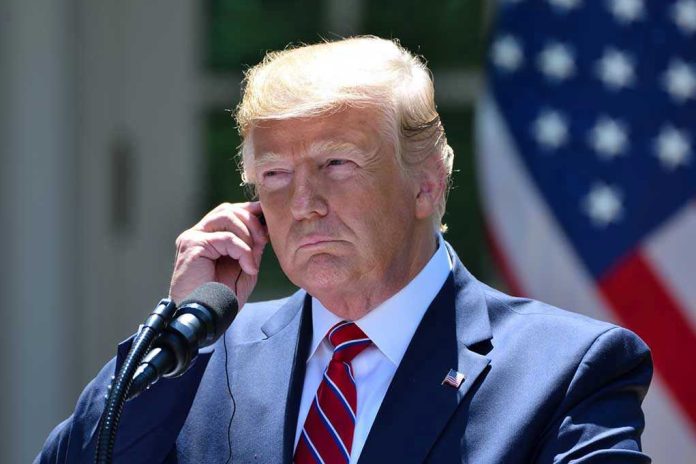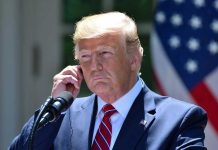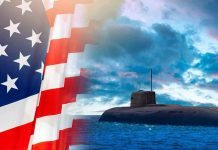
When the world’s third nuclear submarine pact was announced between the U.S. and South Korea, the shockwaves rippled far beyond shipyards—this is the deal that could redraw the security map of Northeast Asia and pour $950 billion into American coffers.
Story Snapshot
- South Korea receives unprecedented U.S. approval to build its first nuclear-powered submarine—in Philadelphia.
- The deal includes $950 billion in trade, energy, and investment flowing into the U.S.
- Military and economic motives collide, with both regional deterrence and domestic industry at stake.
- Regional rivals and allies scramble to interpret the new dynamics in Northeast Asia.
Trump’s Announcement Transforms Northeast Asian Security and U.S. Shipbuilding
President Donald Trump did not hesitate to frame the $950 billion South Korea-U.S. pact as a transformational moment. When he declared South Korea’s nuclear-powered submarine would be built “in the good ol’ U.S.A.,” he signaled a shift in both global defense architecture and domestic manufacturing. The Philadelphia shipyards, long stagnant, now stand at the precipice of a revitalization as billions in South Korean investment pour in, with local workers and suppliers bracing for a windfall. U.S. officials hailed the pact’s scale, while South Korea’s President Lee Jae Myung publicly emphasized the military edge and economic benefits his nation would gain. The announcement, timed with strategic precision during the APEC summit, left regional observers grasping for implications amid rising U.S.-China competition and North Korean provocations.
For South Korea, the breakthrough is clear: after decades of denied requests, Seoul gained coveted access to nuclear propulsion technology—previously restricted to only the UK and Australia. The submarine, to be constructed in Philadelphia, stands as a symbol of American trust and alliance. The deal’s magnitude dwarfs past agreements, with South Korean business leaders pledging vast investments in U.S. energy and manufacturing alongside the military upgrade. The stakes are enormous; North Korean advances in missile and submarine technology have pressured Seoul to modernize, and the new pact delivers both deterrence and technological prestige. Yet, bureaucratic gaps surfaced: South Korea’s Industry Ministry admitted it was not privy to detailed negotiations about the Philadelphia shipbuilding, hinting at complex behind-the-scenes diplomacy and possible future hurdles.
Historical Barriers Fall as Strategic Motives Drive the Pact
Until now, U.S. policy strictly limited the sharing of nuclear propulsion technology. The AUKUS pact with Australia was the only recent exception, and South Korea’s ambitions were repeatedly blocked by nonproliferation agreements and concerns over regional stability. Trump’s reversal carries strategic intent—countering China’s growing naval presence and responding to North Korea’s persistent threats. The U.S. gains not only a fortified ally but also a surge in domestic economic activity, with energy purchases and industrial investments reinforcing American manufacturing. Power dynamics shifted: with Washington holding the keys to the technology and South Korea leveraging economic concessions, each side frames the deal as a domestic triumph. Philadelphia shipyards, once emblematic of industrial decline, could become the epicenter of advanced naval engineering.
Decision-making was concentrated at the top, with Trump and Lee acting as principal architects. The U.S. Congress and South Korean National Assembly may still exert influence over the implementation, especially in technical and regulatory domains. The pact’s reach is broad—workers, defense contractors, and energy exporters all stand to benefit, while military planners assess the new calculus in Northeast Asia. The deal’s finalization at the summit dinner and immediate publicity via social media underscored its urgency and the desire to shape global perceptions before rivals could respond.
Regional Ramifications and Expert Concerns over Arms Race Escalation
Short-term, the announcement delivers an economic jolt and a wave of diplomatic headlines. Long-term, it sets a precedent that may accelerate a naval arms race, with China and North Korea likely to intensify their military modernization. South Korea’s navy will soon gain submarines capable of extended-range operations and stealth, further unsettling the balance of power. U.S. defense analysts praise the alliance’s strengthening, while security scholars warn of the risks: every new transfer of nuclear propulsion technology complicates nonproliferation efforts and raises questions about containment and control. Experts highlight that technical and regulatory hurdles remain, suggesting that the road from announcement to operational submarine may be longer and more complex than initial fanfare implies.
Diplomatic friction with China and North Korea is all but guaranteed. Both nations have already begun recalibrating their security postures, while Japan and other regional actors monitor for shifts in technology sharing norms. Politically, Trump and Lee have scored significant capital, leveraging the pact’s announcement for domestic support. The $950 billion figure, repeatedly cited, serves as a rallying cry for American workers and a reassurance for South Korean taxpayers. Yet, the South Korean government’s hesitance to comment on the Philadelphia construction detail exposes possible rifts or miscommunication, a reminder that even headline-grabbing deals can be undermined by bureaucratic inertia.







